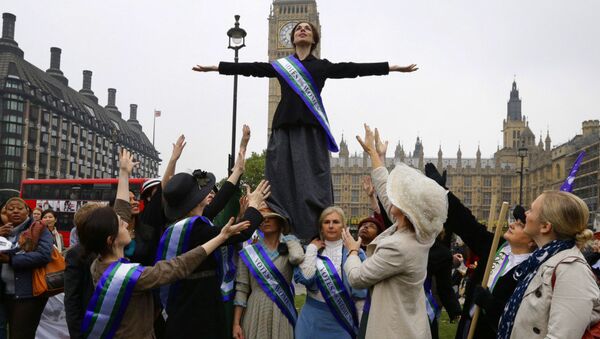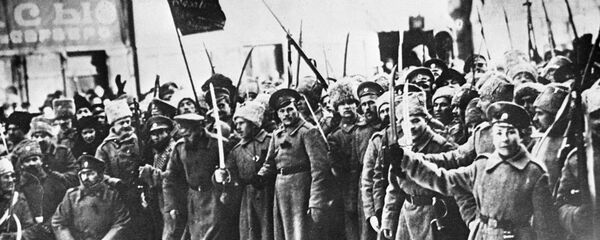The turn of the 20th century saw the emergence of major feminist movements in Britain and in Russia. In Britain women demanded voting rights, while many of the demands made by women in Russia remain very much relevant today.
“They argued that if relieved of their household chores they would be able to take part in public life. It was a very revolutionary idea back in those days,” Brazilian historian Ana Nemi said in an interview with Sputnik Brazil.
A Doctor of History at the Universities of San Paulo and Lisbon, Ana Nemi, underscored the role played by Alexandra Kollontai, a Russian revolutionary, feminist, diplomat and the first woman ever to hold the post of a Cabinet minister.
“In her capacity of a People’s Commissar of Social Welfare, Alexandra Kollontai launched a nationwide campaign to open restaurants, public laundries and also schools and day care centers in a bid to relieve women of their routine homework and give them a chance to participate in public life,” Dr. Nami continued.
“Simultaneously, Soviet women were now able to divorce their husbands and have an abortion – things that put Soviet Russia at the forefront of the feminist movement,” she added.
Meanwhile, all these novelties were facing strong opposition from the very revolutionary government on whose behalf they were being implemented.
“Leftist-minded men, especially those in the trade unions, feared that socially active women would take away their jobs, and this posed a serious problem,” Ana Nami observed.
Under Josef Stalin, the feminist movement and women’s rights in general were put on the back burner though.
Pushed out of the male-dominated Soviet power elite that was increasingly uncomfortable with her insistent advocacy of feminist issues, Alexandra Kollontai was appointed to the Foreign Ministry.
“It was a sort of a privileged exile for her. Still, she did not leave Russia emigrate like did many of her friends unhappy about the direction the Revolution had taken during Stalin’s rule. In one of her books she wrote that the emancipation of women is an open-ended mission because it was never accomplished in the very country that was supposed to liberate all people,” Ana Nami emphasized.
She said that she had learned from the fact that ”it is impossible to separate economic emancipation from a moral one,” because the 19th and 20th centuries failed to accommodate the demands women made in the 18th century, and many of them still live in abject poverty having to work twice as much as men.
“The discussion of the events that took place in 1917 is of paramount importance today as we rethink the emancipation of women,” Ana Nami said in conclusion.
The Russian Revolution, a pair of revolutions that shook Russia in 1917, plunged the country into a civil war and prompted hundreds of thousands from the Tsarist society's upper ranks to flee for their lives.
The first one, known as the February Revolution, lasted from March 7 to March 16 (or February 22 to March 3 in the Julian calendar) 1917.
The second is widely known as the October Uprising or Red October, with the main events starting with an armed insurrection in Petrograd on November 7 [October 25] 1917.
This year, Russia marks the centenary of the events that changed the country forever.
Never miss a story again — sign up to our Telegram channel and we'll keep you up to speed!




